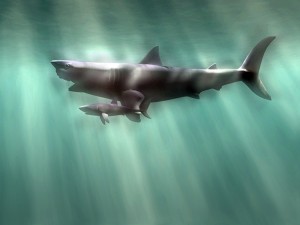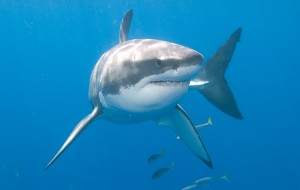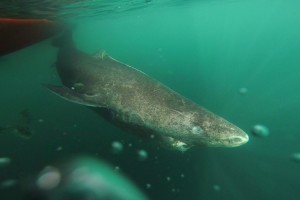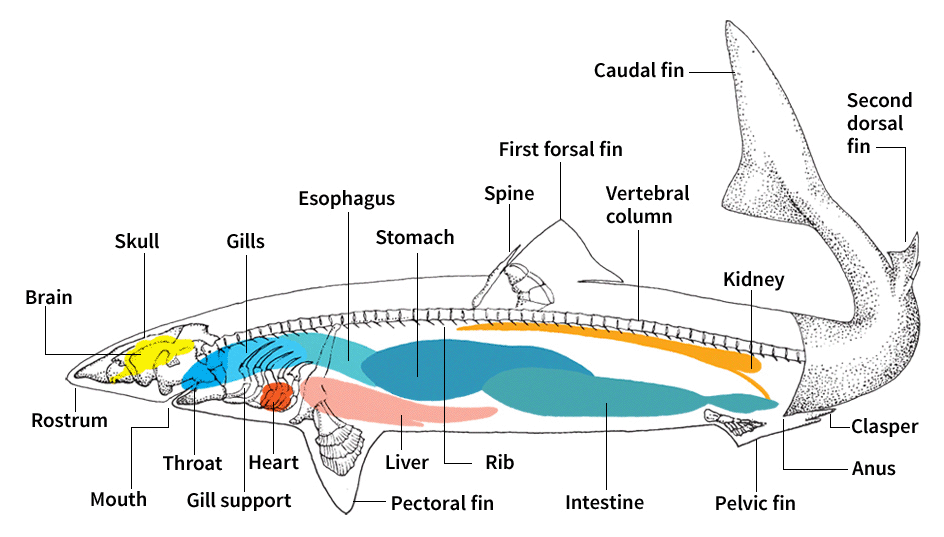The Megalodon vs. Great White Shark De-bait
Wednesday, June 8th, 2022
Illustration of a Megalodon shark and great white shark shown for scale
Credit: © Christian Darkin, Science Source
Arriving at the tail end of a long de-bait, scientists have figured out what happened to the megalodons that used to swim in our oceans. Megalodons were the largest sharks that ever lived, reaching an estimated 52 feet (16 meters) long. Megalodon, which means big tooth, lived from about 17 million to 2 million years ago. The fate of the megalodon has stumped scientists and enthusiasts for ages. How did such a powerful and monstrous shark die out?
The megalodon was a powerful predator (hunting animal). Its jaws may have reached about 6 1/2 feet (2 meters) across. Scientists believe it had an exceptionally strong bite. Megalodon’s largest teeth measure about 7 inches (17 centimeters) along their edges. They rank as the largest shark teeth known. A new finding made a splash in the headlines, revealing just how this monster shark became extinct. Extinction occurs when every member of a species (kind) of living thing has died.

The great white shark, shown here, is one of the most dangerous sharks. It has many sharp, triangular teeth. The great white shark can grow to more than 21 feet (6.4 meters) in length.
Credit: © Shutterstock
A new study has shown that maybe those big teeth didn’t help these large predators out much. After studying zinc isotopes in fossils of teeth from great white sharks and megalodons, the scientists reported that great white sharks and megalodons competed for food. Zinc isotopes in teeth reveal where the animal lies on the food chain. When teeth have low levels of zinc, that means the animal is higher on the food chain. The great white shark and megalodon tooth fossils had the same range of zinc isotopes. The two sharks were not chums, they were biting into the same prey! In a feeding frenzy, the great white sharks won, leaving the great big megalodons hungry.
While the great white shark is one of the most dangerous sharks, they can only grow to a little more than 21 feet (6.4 meters) in length. So the megalodon had about 30 feet (9 meters) on them! Unlike most other sharks, great white sharks have warm blood and warm muscles. These characteristics make them faster and stronger than most other sharks. Great white sharks have sharp, triangular teeth with jagged edges. They can rip chunks of flesh from seals and sea lions, two of their favorite prey. It looks like baby shark beat out the bigger shark!




